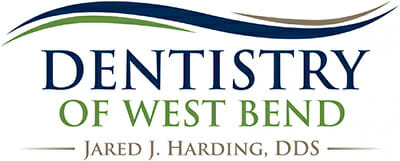Dental sealants help protect your back teeth from decay. There are many claims and myths about them, and it’s essential to research what is true and what is not before investing in them. This guide will help you understand dental sealants better. It will also talk about common misunderstandings and how they help in dental care.
Understanding Dental Sealants
Dealing with dental care can be tough. However, dental sealants offer a simple and effective way to prevent cavities. They act like a shield against bad bacteria.
Let’s go through the important points about dental sealants. We will clear up any misunderstandings and explain why they are vital for keeping your smile healthy for a long time.
What Are Dental Sealants?
Imagine having a shield on your teeth that protects them from food particles and bacteria. This is exactly what dental sealants do. These thin plastic coatings are carefully put on the grooves of your molars and premolars, which are the teeth that help grind food.
The sealant material, usually a strong resin, is applied in liquid form and then hardens quickly. This results in a smooth layer that covers the tooth. It prevents food particles and bacteria from getting into the tiny pits where tooth decay can happen.
Think of brushing your teeth as cleaning the outside. Sealants give you extra protection, reaching those tricky spots where your toothbrush may not go well.
The Role of Sealants in Preventive Dental Care
Preventive dental care is really important for a healthy smile. Dental sealants are key in this care. They help stop tooth decay before it starts, which is great for long-term oral health. This is especially true for children and teens.
When kids get their first permanent molars at around age six, these teeth are at risk for decay. Putting sealants on them right away gives good protection during the time they are most at risk. The same goes for second molars, which come in at around age twelve. Protecting them helps keep cavities away.
Using sealants along with regular brushing, flossing, and dental checkups builds a strong base for a lifetime of healthy smiles.
Debunking Common Myths
Myths can confuse patients about many dental procedures. This can make people hesitant or lead to wrong ideas. Dental sealants often face these kinds of misunderstandings.
Let’s clear up some common myths about sealants. This way, you can have the right information to make good decisions about your oral health.
Myth: Sealants Are Only for Children
Sealants are great for kids and teenagers. They help when new permanent teeth come in. But the truth is that adults can also benefit from sealants. This is especially true for those who often get cavities or have deep grooves on their molars.
Many people think sealants are only for kids because they work best on newly grown permanent teeth. Yet, adults with healthy molars can also use sealants to help prevent problems.
Adults should talk to their dentists about whether sealants are suitable for them. Good dental care is important for everyone at any age, and sealants can be a key part of that care.
Myth: If You Brush and Floss, You Don’t Need Sealants
Taking care of your teeth with regular brushing and flossing is really important, but it may not be enough to completely prevent cavities. Your toothbrush can have trouble reaching the tiny grooves and cracks on the chewing surfaces of your teeth.
These small spaces can hide food particles, which gives bacteria a place to grow. These bacteria then produce acids that can wear away your tooth enamel. Sealants can help by creating a barrier over these weak spots, keeping food and bacteria away.
So, think of sealants as something extra you can use along with your brushing and flossing. They offer added protection against decay and cavities.
How Sealants Prevent Tooth Decay
To understand how sealants help your teeth, you need to know how cavities form. When plaque, which contains bacteria, mixes with sugars and starches from food, it creates acids. These acids attack the enamel, the outer layer of your teeth. The attack is worse in the grooves and fissures of the chewing surfaces. Over time, this acid breaks down the enamel and can lead to dental caries or cavities.
Dental sealants help by creating a physical barrier that stops the bacteria’s acids from reaching the teeth’s weak spots. Before applying the sealant, the tooth is cleaned, and a mild acid etching solution is used. This etching roughens the surface of the enamel, making tiny holes for the sealant to stick better.
Once the sealant material dries, it blocks the grooves and fissures. This helps keep plaque and food particles from building up, protecting the tooth from decay.
Safety and Materials
It’s normal to ask questions about the materials used and safety when it comes to dental or medical procedures. Dental sealants have been around for a long time. Their safety has been proven over the years.
It’s important to discuss some worries people may have about sealant materials and confirm they are safe for long-term use.
Concerns About Sealant Materials
In recent years, people have worried about some dental materials, especially bisphenol A (BPA). This chemical is in certain plastics and resins, including some dental sealants. BPA might cause health issues, which has raised concerns about dental products.
However, the use of BPA in dental sealants has decreased a lot. Many sealant makers have started using BPA-free materials to address these worries. If you are thinking about getting sealants and are worried about BPA, talk to your dentist.
They can tell you what sealants they use and if they are BPA-free. This way, you can get the treatment that matches your needs and feel more at ease.
Addressing Safety Concerns
The American Dental Association (ADA) says that dental sealants are safe and effective. These sealants are checked carefully for safety and approved by the U.S. Food and Drug Administration (FDA) as well.
The ADA and other well-known health groups agree that dental sealants help prevent tooth decay. Research shows that if any BPA is released from sealants, it is minimal and can harm health very little.
If you have safety concerns, talk to your dentist. They can answer your questions and give you good information to help ease your worries. Being well-informed helps you make the right choices for your oral health.
Learn More About Dental Sealants
Knowing the facts about dental sealants is very important for good oral health. It helps to clear up common myths and understand the science behind sealants. This way, you can make smart choices about their benefits. Sealants are key in preventing dental care by protecting your teeth from decay. Think about their safety, materials, and cost to see the long-term benefits of using dental sealants. If you have more questions or want to learn more about dental sealants, contact Dentistry of West Bend today.


Recent Comments